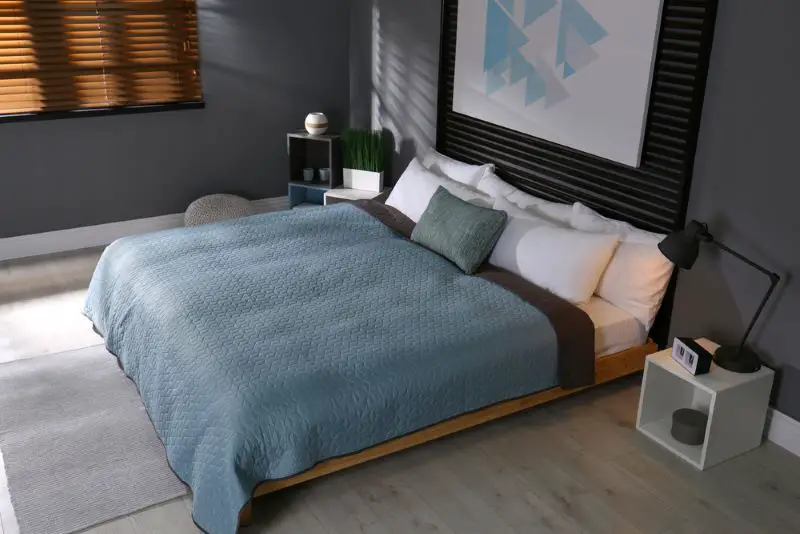Click here to get this post in PDF
As busy entrepreneurs working long hours, getting a good night’s sleep is essential. This quest for a good night’s sleep has led to various innovations in bedding and mattress designs. One such innovation gaining traction is the incline mattress, which offers a unique sleeping experience by elevating the upper body. But with the rise of incline mattresses, a question arises: Is it better to sleep on an incline or decline? In this blog, we’ll delve into the benefits and drawbacks of both incline and decline sleeping positions to help you make an informed decision about your sleep quality and overall health.
Understanding Incline Mattresses
First, let’s explore what an incline mattress is and how it differs from a traditional flat mattress. An incline mattress is designed to elevate the upper body, typically by raising the head and torso while keeping the lower body in a relatively flat position. This elevation can be achieved through various methods, such as adjustable bed frames, wedge pillows, or specialized mattresses with built-in inclines.
Advocates of incline mattresses claim several potential benefits, including:
- Reduced Acid Reflux: Elevating the upper body can help prevent acid reflux by keeping stomach acid from flowing back into the esophagus, thereby reducing heartburn and discomfort during sleep.
- Improved Breathing: Sleeping on an incline may alleviate snoring and sleep apnea by opening up the airways and promoting better airflow, leading to improved breathing patterns and overall respiratory health.
- Enhanced Circulation: Elevating the upper body can facilitate blood circulation, particularly in the legs and feet, which may help alleviate swelling and discomfort associated with conditions like varicose veins and edema.
- Alleviation of Back Pain: Some individuals find relief from back pain by sleeping on an incline, as the elevated position can provide better support and alignment for the spine, reducing strain on the lower back.
Now, let’s consider the alternative: sleeping on a decline.
Exploring Decline Sleeping Positions
While incline mattresses have garnered attention for their potential benefits, sleeping on a decline—or with the lower body elevated—also has its proponents and potential advantages. However, it’s essential to note that decline sleeping positions are less common and may require specialized equipment or arrangements, such as adjustable bed frames or inclined mattress toppers.
Advantages of decline sleeping positions may include:
- Enhanced Lymphatic Drainage: Sleeping with the lower body elevated can promote lymphatic drainage, aiding in the removal of toxins and waste products from the body’s tissues. This may contribute to reduced inflammation and improved immune function.
- Reduced Lower Back Pain: Some individuals find relief from lower back pain by elevating the lower body, which can help alleviate pressure on the lumbar spine and promote better spinal alignment during sleep.
- Improved Digestion: Elevating the lower body may facilitate digestion by promoting the natural flow of food through the digestive tract, potentially reducing symptoms of bloating, gas, and indigestion.
- Enhanced Recovery: Athletes and individuals recovering from injuries or surgeries may benefit from sleeping on a decline, as it can help reduce swelling, promote circulation, and accelerate the healing process.
Choosing the Right Sleeping Position
When considering whether it’s better to sleep on an incline or decline, it’s essential to prioritize your individual comfort, preferences, and specific health needs. While both incline and decline sleeping positions offer potential benefits, there is no one-size-fits-all solution, and what works best for one person may not be suitable for another.
Here are some factors to consider when choosing your sleeping position:
- Personal Health Conditions: If you have specific health concerns such as acid reflux, snoring, sleep apnea, or back pain, consult with your healthcare provider to determine the most suitable sleeping position for your needs.
- Comfort and Preference: Experiment with different sleeping positions, inclines, and declinations to find what feels most comfortable and supportive for your body. Pay attention to how you feel upon waking and any changes in sleep quality or symptoms.
- Quality of Mattress and Bedding: Regardless of your chosen sleeping position, invest in a high-quality mattress and supportive bedding that promotes proper spinal alignment and pressure relief. Consider factors such as mattress firmness, material composition, and breathability to ensure optimal sleep comfort.
- Consistency and Adjustment: Once you’ve found a sleeping position that works for you, strive to maintain consistency and make gradual adjustments as needed. Be mindful of any changes in your sleep environment, lifestyle habits, or health status that may necessitate reevaluation of your sleeping position.
In conclusion, the debate over whether it’s better to sleep on an incline or decline ultimately comes down to individual factors and preferences. Both incline and decline sleeping positions offer potential benefits for certain health conditions and sleep concerns, but there is no one-size-fits-all solution. Experimentation, consultation with healthcare professionals, and prioritizing comfort and support are key to finding the optimal sleeping position for your needs. Whether you prefer the elevated comfort of an incline mattress or the potential benefits of a decline sleeping position, prioritize restful sleep and overall well-being for a healthier, happier life.
You may also like: Why Business Owners Have a Hard Time Sleeping
Image source: Depositphotos.com

